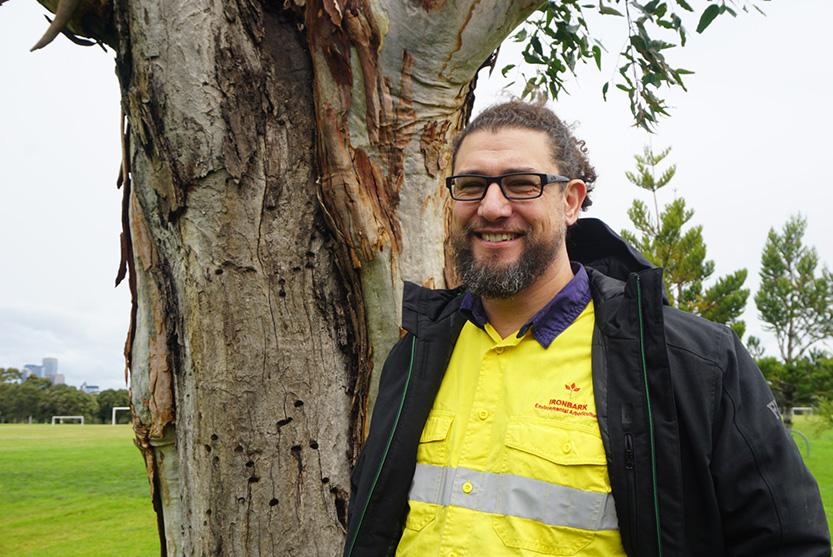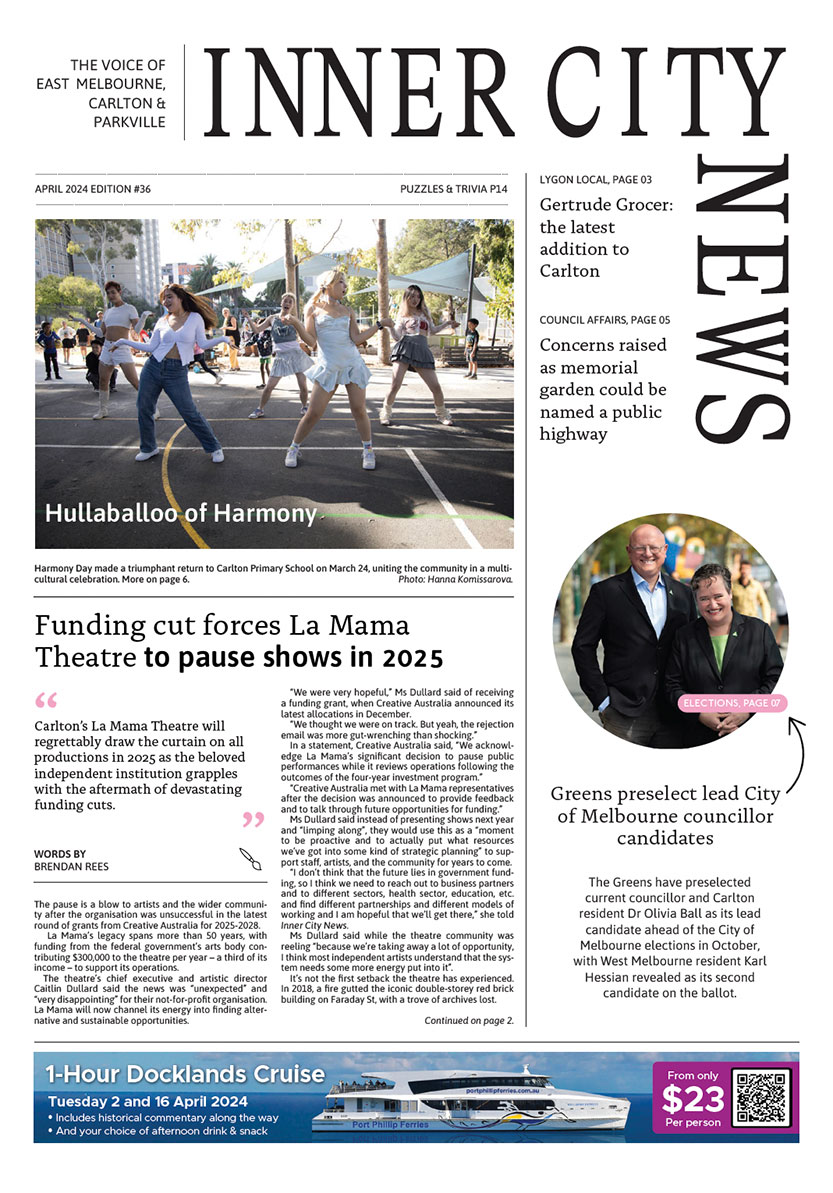Carved hollows create new homes for wildlife in the urban forests
A Sydney blue gum next to the Princes Hill Tennis Club stands out in the vast greenery of Princes Park, with its decayed trunks and broken branches proof of a tree that is no longer living. Yet, it is not entirely dead.
When the City of Melbourne reached out to ecology management company Ironbark Environmental Arboriculture (IEA) for an assessment of the blue gum’s future, its director Grant Harris determined that the tree could stay and provide life for others.
“We’ve carved a hole at the top for wildlife. And we will cut up another one,” he told Inner City News. “What we’re trying to do is provide hollows for kookaburras.”
IEA has been working with the council to install carved hollows in more than 25 trees in Royal Park and other locations around the city including Flagstaff Gardens, Lincoln Square, Domain Parklands, and more. The man-made hollows are created to bring back hollow-dependent birds and mammals to the urban forests, contributing to the biodiversity of the city.
Each hollowed tree had been earmarked for removal due to death or severe decline in health. But rather than removing these trees, IEA and the council have pruned them back to reduce risk and have carved out additional homes for species like red rump parrots, kookaburras, microbats, and rosellas.
Speaking in recognition of the value that tree hollows provide to biodiversity in the municipality, the council’s environment portfolio lead Cr Rohan Leppert said, “Melbourne’s thriving urban forest is a defining feature of our city, which is home to around 80,000 council-owned trees.”
“Tree hollows, whether naturally occurring or human-made, enhance biodiversity by providing shelter for a wide variety of animals including birds and bats,” Cr Leppert said.
The City of Melbourne now homes many hollow-nesting birds, having conducted a bird survey in 2018 which revealed that only a few species were found nesting in parks.
Mr Harris said most of the trees in the municipality were quite young and had not yet formed hollows.
In the City of Melbourne, hollows will form when normally a branch breaks or pruning wounds. Insects will get in; they’ll start chewing the wood, decaying the wood, making it bigger, and it takes time.
“The thing about hollows is it [the process] takes a long time. These young trees may be 50 to 100 years away from actually having hollows,” he said.
The kookaburra has been one of the targeted species IEA and the council has been trying to lure into the carved hollows. The terrestrial tree kingfisher native to Australia is widely known for its loud, distinctive laughing-like calls. They can inhabit humid forests, arid woodlands, as well as suburban areas with tall trees or near running water.
“We’re trying for the kookaburra because there’s some evidence that they’re declining in urban areas. There’s much less of them than there used to be.”
Mr Harris believes Royal Park and Princes Park provided good habitats for kookaburras because of the shape of the trees and the environment.
“The kookaburra is a really good target species because they can adapt well to cities,” he said.
“They steal sausages from barbecues. They’re clever birds. But the only thing that stops them from living in the cities is there’s no hollow.”
“If the habitat’s not there, the animals have no chance. They will not come.”
“A lot of hollows for them have been occupied by Rainbow Lorikeets because they’re everywhere and they’re quite aggressive.”
IEA and the council have put camera traps to monitor the installed hollows to determine if they have been discovered by the target species and to inform future habitat needs.
“We’ve had birds coming the next day, but we’ve also had somewhere they haven’t come for maybe two months,” Mr Harris said.• “Eventually, they will come. But it’s really hard.”
“It really depends on if it is the breeding season. Are they looking for hollows? Are they actively hunting? Is it in a place where they are already there? If the animal’s not in the area, it will not suddenly fly over to have a look.”
The City of Melbourne hosts Citizen Forester hollow mapping events each winter between August and October. Hollow mapping dates for 2023 will be announced soon.
Community members can help monitor tree hollows year-round and are encouraged to record animal nesting sightings via iNaturalist.
For more information: ironbarkenviroarb.com/hollow-creation
Click here for more information on the City of Melbourne’s hollow project.

Carlton language school championed by Ukrainian refugee






 Download the Latest Edition
Download the Latest Edition